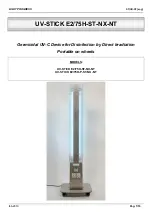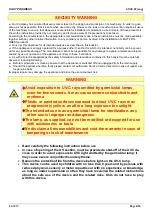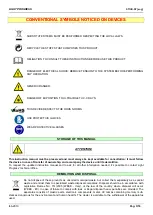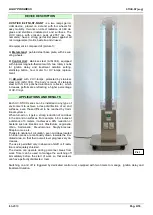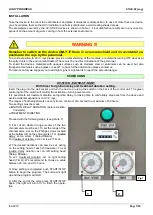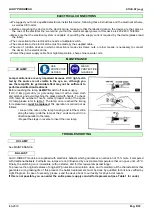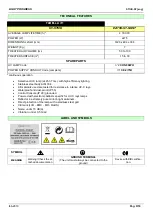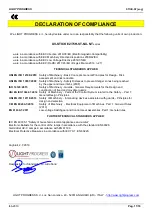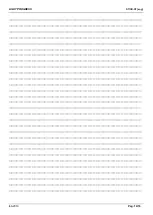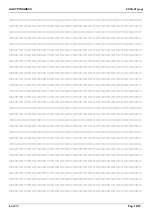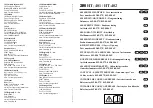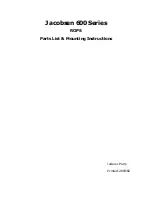
LIGHT PROGRESS
STICK-ST [eng]
feb-2019
Pag. 4/16
DEVICE DESCRIPTION
UV STICK
E2/75H-ST-NX-NT
is a two lamps germi-
cidal device , placed on a stand, with four wheels for
easy mobility. It works on direct radiation at 360 de-
grees and sterilizes irradiated air and surfaces. The
UV-C lamps, with emission peak at 235.7 nm. (na-
nometers), have a strong germicidal power against all
micro-organisms (molds, bacteria and viruses).
All equipment is composed of (picture 1):
A)
Metal stand
: painted steel base plate, with 4 swiv-
eling wheels.
B)
Control Unit
: stainless steel (AISI 304), equipped
with bipolar magneto-thermal switch, two rotary knobs
for ignition delay and treatment duration setting,
start/stop button, hour meter for UV lamps replace-
ment.
C)
UV unit
: with 2 UV-lamps, protected by stainless
steel grid (AISI 304). The body is made of stainless
steel with mirror polished aluminium reflector, which
increases performance reflecting a higher percentage
of UV-C rays.
APPLICATIONS AND RESULTS
Each UV-STICK series can be installed in any type of
environment to achieve a deep disinfection of air and
surfaces, even those difficult to be reached by tradi-
tional systems.
When turned on, it gets a strong reduction of microbes
in the air and on surfaces. For example, in 8 minutes at
a distance of 3 meters, it achieves a 99% reduction of
bacteria such as: Bacillus coli, Clostridium, Legionella,
Vibrio, Salmonella, Pseudomonas, Staphylococcus,
Streptococcus, etc..
Thanks to natural air circulation, even microbes located
in hidden areas are continually drawn towards the irra-
diated area, so that their overall level progressively de-
creases.
The use is permitted only in absence of staff or if radia-
tion is adequately shielded.
The device can operate during personnel break from
work. Timer can be used to manage the switching off
immediately before the start of work, so that workers
can have perfectly disinfected room.
Switching on and off is triggered by dedicated control unit, equipped with two timers to manage ignition delay and
treatment duration.
Pic.1

